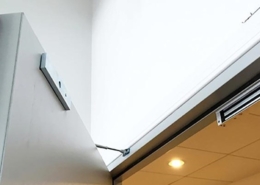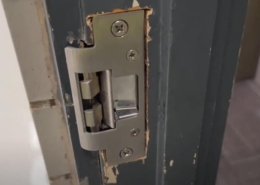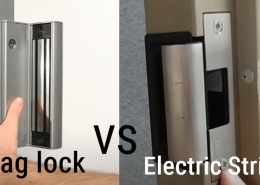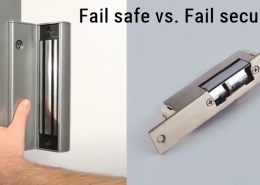Fail-Safe vs. Fail-Secure: Key Differences in Locking Systems
Discover the fundamental differences between fail-safe vs. fail-secure locking systems. Dive into our comprehensive guide to learn about their advantages and appropriate uses
In the world of locking systems, ‘fail-safe’ and ‘fail-secure’ are terms you’ll frequently encounter. These terms describe what happens to a lock during a power failure or an emergency. But what exactly do they mean, and how do they impact the security and safety of a facility?
This article aims to demystify these terms, helping you understand the differences between fail-safe and fail-secure locking systems. We’ll look at how each system operates, its advantages, and the situations in which they are most appropriate.
What’s the key difference between fail-safe vs. fail-secure?
Fail-safe and fail-secure are two design principles primarily used in safety and security systems, including locks, access control systems, and other types of machinery. The key difference is how they react to power loss or system failure.
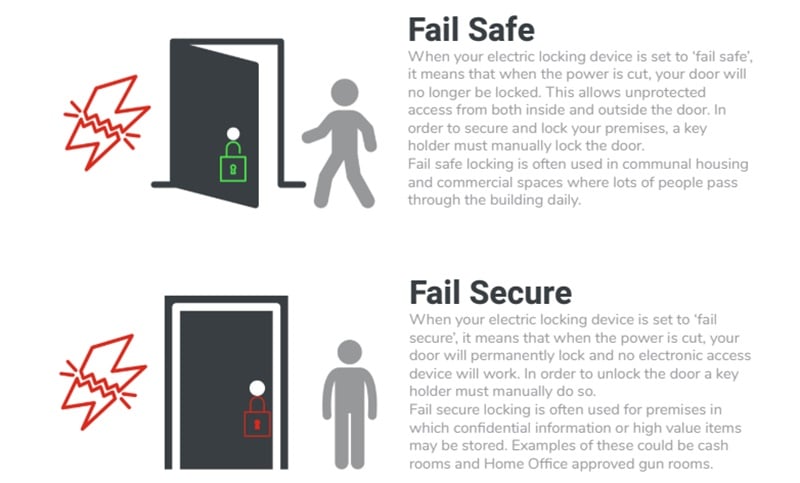
Fail-Safe: In a fail-safe system, safety is prioritized. This means that if power is lost or a system fails, it defaults to a state considered safe for its users or operators.
- For example, a fail-safe door lock would automatically unlock if power is lost in a building’s access control system. This allows people to exit freely in the case of an emergency, such as a fire or a power outage. While this enhances personal safety, it can compromise security, as unauthorized individuals could also gain access during these periods.
- Another example is a traffic light system, where the lights default to flashing red in all directions during a power outage or system malfunction, signaling all drivers to stop. This prevents potential accidents if the traffic lights stop working.
Fail-Secure: In a fail-secure system, security is prioritized. This means that if power is lost or a system failure occurs, the system defaults to a state that maintains security.
- If power is lost, a fail-secure door lock will stay locked in an access control system. This prevents unauthorized access during a power outage or system malfunction but could potentially trap people inside the building.
- In computer systems, a fail-secure design might involve shutting down certain functions or logging out users to prevent unauthorized access in the event of a system failure.
The key difference between fail-safe and fail-secure lies in their priorities during a power loss or system failure. Fail-safe systems prioritize safety and tend to default to an open or nonrestrictive state, whereas fail-secure systems prioritize security and typically default to a closed or restrictive state.
The choice between a fail-safe and a fail-secure design will depend on the specific needs and requirements of the situation, considering factors such as the level of security needed, the potential risks associated with a failure, and applicable safety regulations. Often, both principles are combined to balance safety and security needs.
Fail safe vs. fail secure: a common misconception.
A common misconception about fail-safe and fail-secure systems is that one is inherently “better” or “safer” than the other.
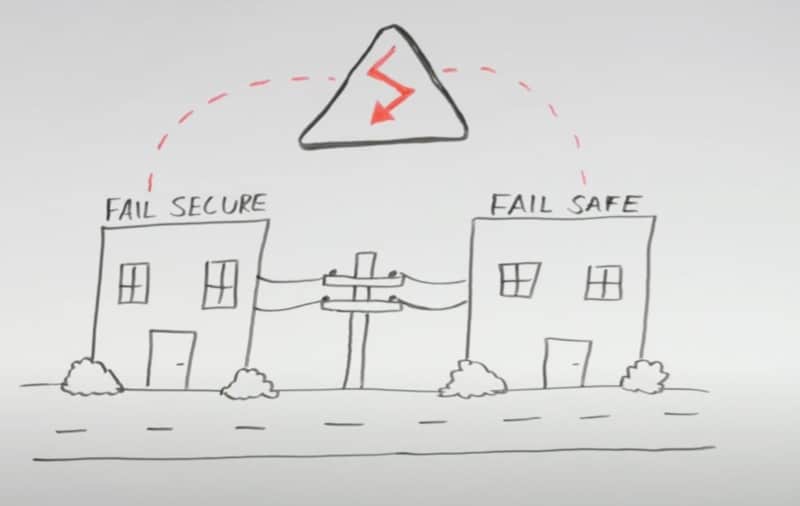
Whether a fail-safe or fail-secure system is more appropriate depends entirely on the specific application and its requirements. For example, in a high-security environment, preventing unauthorized access at all times might be more important, making a fail-secure system more appropriate.
On the other hand, in a public building where safety is paramount, and the threat level is low, a fail-safe system that allows people to exit freely in an emergency might be the best choice.
Another misconception is that fail-secure systems are unsafe because they could trap people inside a building during a power outage or system failure.
However, safety regulations typically require people always to exit inside, even if a fail-secure door is locked from the outside. This is often achieved by pairing the fail-secure lock with a mechanical push bar or similar device inside the door.
Finally, some might think that a fail-safe system is always open when power is lost, which could compromise security. While it’s true that a fail-safe lock opens during a power outage or system failure, it’s important to note that these locks can be designed to work with backup power systems to maintain security during temporary power outages.
Fail-Safe vs. Fail-Secure: Definition
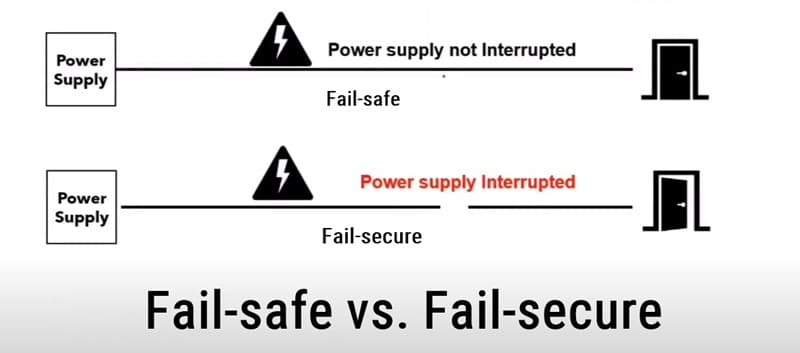
What is fail-safe?
“Fail-safe” is a term used in various fields such as engineering, computer science, and aviation to refer to a design principle where a system or mechanism is designed to automatically revert to a safe condition or cease operation in the event of a failure or malfunction.
The main purpose of a fail-safe mechanism is to prevent a system from causing harm or damage when something goes wrong. This could refer to harm or damage to people, property, the system itself, or other systems.
What is fail secure?
“Fail-secure,” also known as “fail-locked,” refers to a design principle in which a device or system defaults to a secure or locked state when experiencing a power loss or system failure.
It’s important to note that while fail-secure systems can maintain security during a failure, they could potentially compromise safety by restricting egress during emergencies.
Fail-Safe Locks Vs. Fail Secure Locks
What Are Fail-Safe Locks?
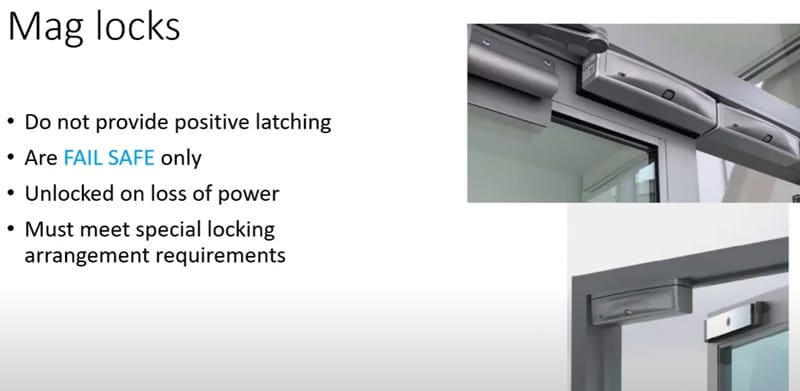
Fail-safe locks are security devices that unlock automatically when power is lost or a specific signal is sent to the lock. The primary purpose of these locks is to ensure the safety of people inside a building or a specific area in case of emergencies, such as power outages or fires.
An example is the magnetic locks used on emergency exit doors in many public buildings. These doors are often designed to be fail-safe so that people can quickly and easily exit the building in an emergency, even if the electronic locking system loses power.
It’s important to note that while fail-safe locks enhance safety by ensuring people can exit, they can potentially reduce security during power outages or system malfunctions because they default to the unlocked state. This is the main trade-off between fail-safe (safety-focused) and fail-secure (security-focused) systems.
What Are Fail Secure Locks?
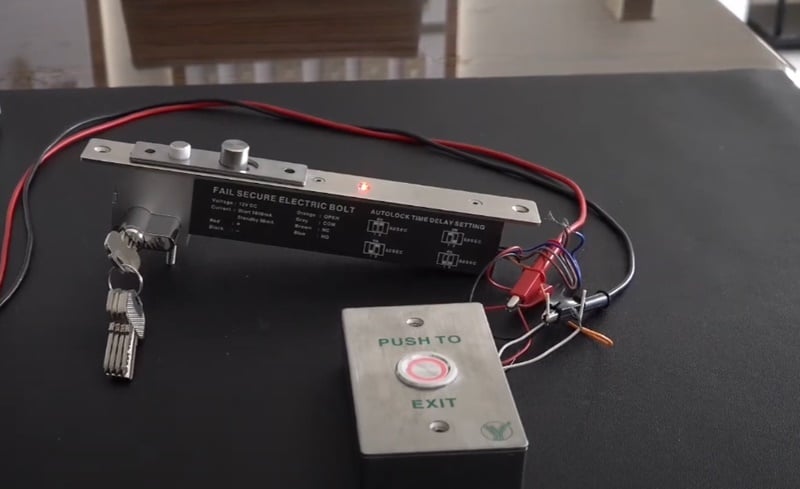
Fail-secure locks, or fail-locked or non-fail safe locks, are designed to stay locked when power is lost or a system failure occurs. They are typically used in security-sensitive situations where it’s important to maintain a secure environment, even during power outages or other failures.
A fail-secure lock would lock the door when power is lost in a door-locking system. Only a mechanical key or physical intervention could unlock the door.
For example, many high-security facilities, such as banks or data centers, use fail-secure locks on their exterior doors. These doors remain locked outside during a power outage, preventing unauthorized access.
It’s important to note that while fail-secure locks enhance security, they can potentially pose safety risks during emergencies if people need to exit quickly and the doors are locked.
Fail safe vs. fail secure: Cost.
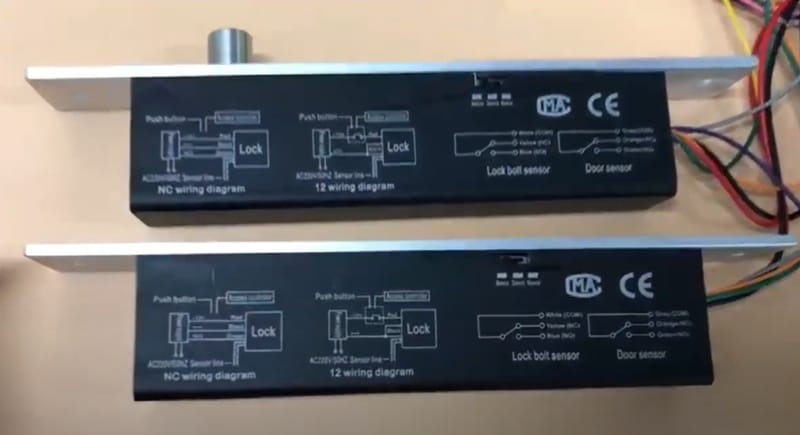
The cost of fail-safe versus fail-secure systems, particularly in the context of electronic locksets, can be influenced by various factors, and it’s not necessarily the case that one is more expensive than the other by default. Here are some aspects to consider:
- Hardware Costs: The initial purchase price of fail-safe and fail-secure locksets can be similar, depending on the specific make and model. The choice between fail-safe and fail-secure does not typically significantly impact the hardware cost.
- Installation Costs: Both types of locksets require professional installation, and the cost can depend on the system’s complexity. The type of doors, the material of the doors, and the existing infrastructure (like power supply and network connectivity for smart locks) can influence the installation cost more than whether the system is fail-safe or fail-secure.
- Operational Costs: The operational costs can depend on the power requirements of the locksets and the frequency of their use. However, these costs are usually minimal and unlikely to differ significantly between fail-safe and fail-secure systems.
- Compliance Costs: Depending on local building codes and regulations, one system might require additional safety or security measures. For example, a fail-secure system used on an exit door may need to be paired with a mechanical override to ensure people can exit in an emergency, which could add to the cost.
- Indirect Costs: The decision between fail-safe and fail-secure could have indirect cost implications in the event of an incident. For example, if a fail-safe system compromises security during a power outage, the potential cost of theft or vandalism could be significant. Conversely, the potential liability costs could be substantial if a fail-secure system impedes evacuation during an emergency.
In summary, choosing between fail-safe and fail-secure is not primarily a cost decision but is based on safety, security, and compliance needs. The costs associated with these systems can be influenced more by other factors, such as the specific hardware chosen, the complexity of the installation, and the potential indirect costs related to security and liability risks.
Fail safe vs. fail secure: installation.
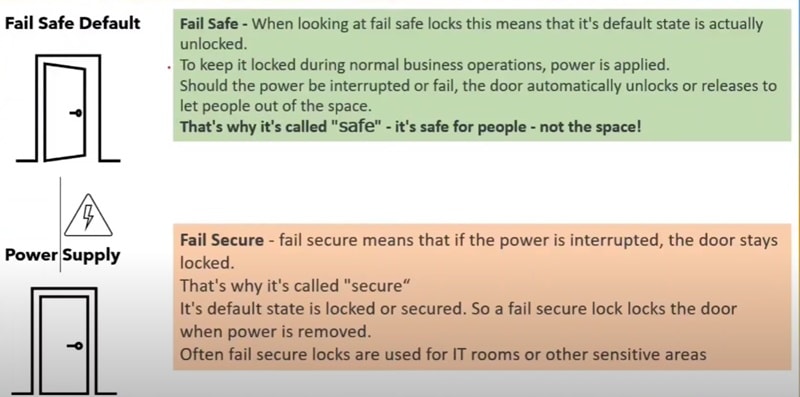
The installation process for fail-safe and fail-secure electronic locksets will be relatively similar in most cases, as they require similar steps and components. However, there are a few key considerations that can differ between the two:
- Power Supply: Both types of locks require a reliable power source. The installer must ensure the lock is properly connected to the building’s power supply or a dedicated power source.
- Wiring: Electronic locks require wiring to connect them to the power supply and the control system. The complexity of the wiring can vary based on the specific lock model and the system’s configuration.
- Control System: Both types of locks will typically be connected to a control system that manages access permissions and monitors the status of the locks. This system might be a simple keypad, a complex networked system, or anything.
- Door Type: The type of door can also influence the installation process. Some locks are designed for specific types of doors (e.g., wood, metal, glass), and the installer must ensure the lock is compatible with the door.
- Safety Regulations: Depending on local safety regulations, fail-secure locks might need to be installed with a mechanical override (like a push bar) on exit doors to allow people to exit even when the lock is engaged. Similarly, fail-safe locks might need to be connected to a backup power supply or fire alarm system to ensure they unlock in an emergency.
- Testing: After installation, both locks should be thoroughly tested to ensure they function correctly in normal conditions and case of a power loss or system failure.
In summary, while the basic installation process for fail-safe and fail-secure locks is similar, the specific requirements and considerations can vary based on the type of lock, the type of door, and local safety and security regulations. It’s always a good idea to hire a professional installer familiar with these types of systems and the relevant regulations in your area.
Fail Safe vs. Fail Secure: Which Lock is Right for Your Door?
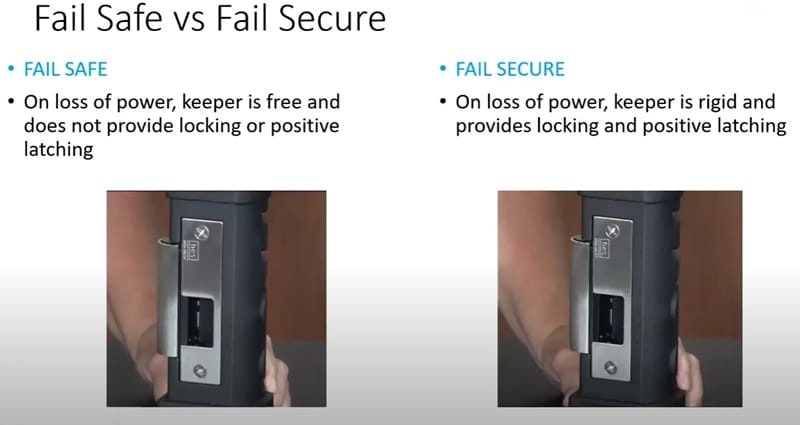
Deciding whether a fail-safe or a fail-secure lock is right for your door involves considering several factors related to the purpose of the door, the overall security needs, and safety regulations. Here are some considerations:
- Safety Requirements: If the door is an emergency exit, it’s generally required to have a fail-safe lock so that people can exit freely in emergencies like fire or power outages.
- Security Requirements: A fail-secure lock could be better for exterior doors, especially in high-security environments like banks or data centers. These locks remain locked in the event of power loss, preventing unauthorized access.
- Regulations and Compliance: Different jurisdictions may have different building codes and regulations regarding door locks. It’s important to check these regulations and ensure the chosen lock type complies with them.
- Power Reliability: A fail-secure lock could trap people inside a building in areas with frequent power outages. A fail-safe lock could be a better choice in such situations, or you might consider installing backup power supplies for fail-secure systems.
- Balance of Safety and Security: A combination of fail-safe and fail-secure locks balances safety and security in many buildings. For example, interior doors might use fail-safe locks for safe egress, while exterior doors use fail-secure locks for security.
- Type of Building: The nature of the building or facility also matters. For instance, public buildings with high foot traffic might prioritize safety and choose fail-safe locks, while private buildings focusing on security might prefer fail-secure locks.
Remember, the choice between fail-safe and fail-secure isn’t about which is universally better; it’s about which is more appropriate for your situation. Consulting with a professional locksmith or security consultant can help you make the best choice for your needs.
Conclusion
In closing, the choice between fail-safe and fail-secure locking systems greatly depends on your specific needs and the nature of the secured facility. Both systems have their unique advantages and appropriate uses.
Fail-safe locks are designed to prioritize safety, ensuring free exit during power failures or emergencies. In contrast, fail-secure locks prioritize security, remaining locked even when power is lost.


